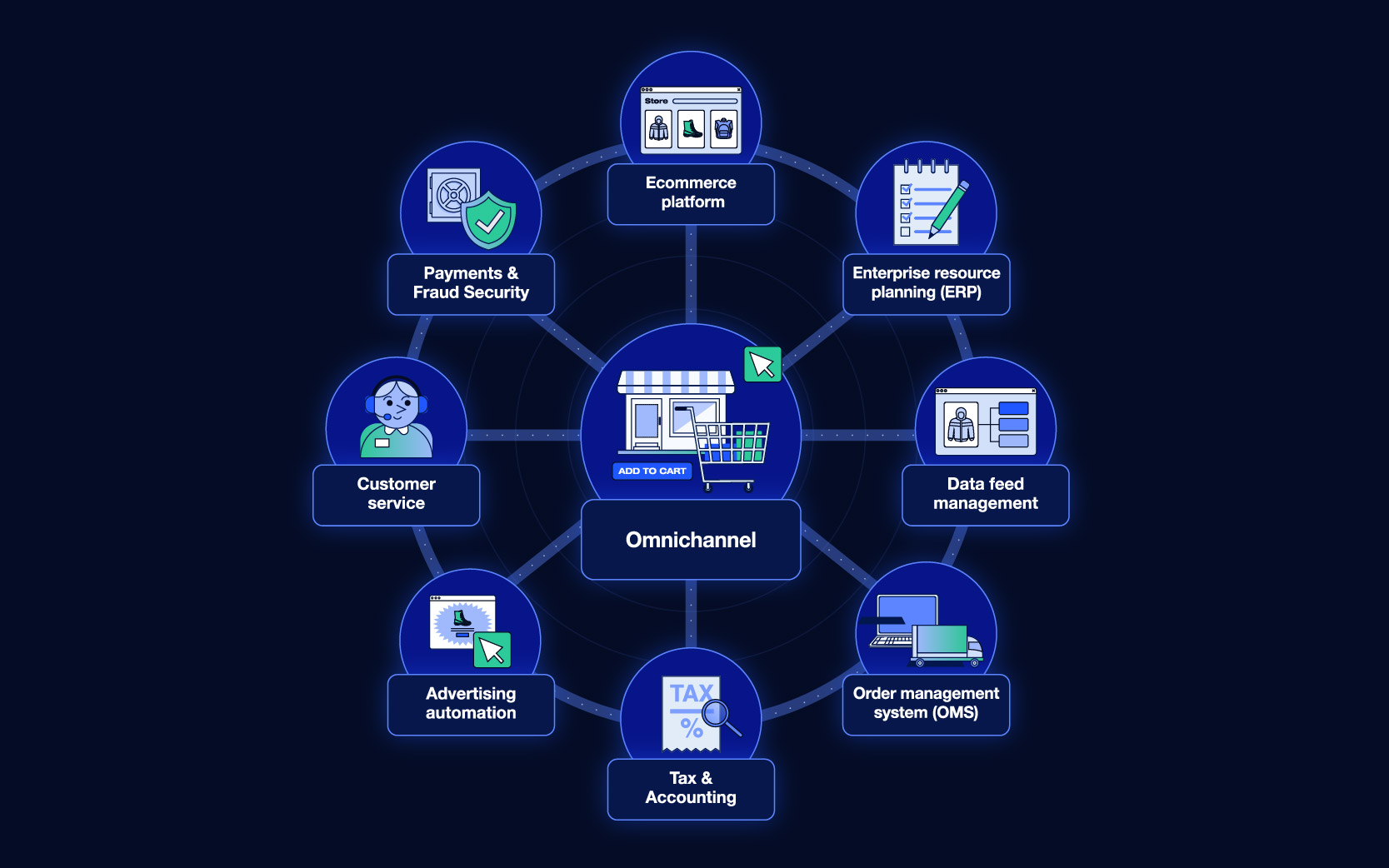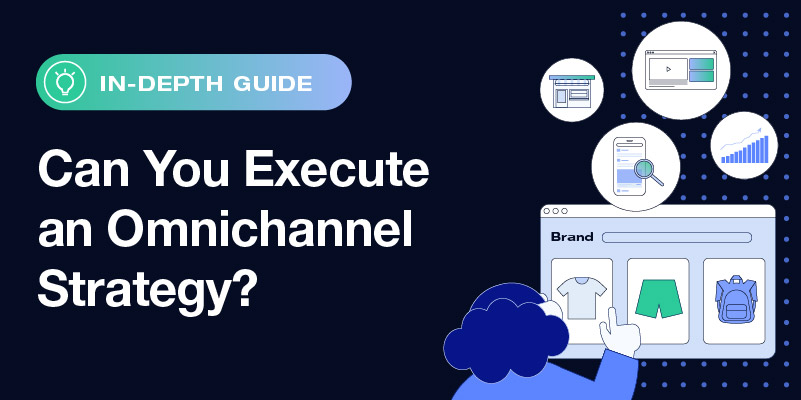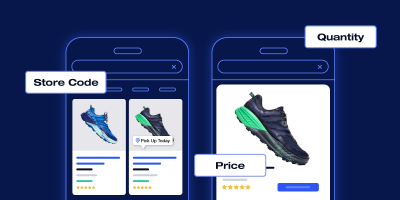Today’s ecommerce systems are labor-saving, multifaceted, and synergistic. While it may sound like we’re dumping the three biggest words we know right into your morning cup of coffee, the point is that modern commerce moves so fast, merchants can either benefit from the growing tech ecosystem or fall behind quickly.
An omnichannel strategy puts an emphasis on integrating your systems to create a seamless brand experience at every touchpoint. Omnichannel empowers a company to reach new customers, strengthen the customer-brand relationship, and become more efficient.
Adopting an omnichannel strategy is an investment of your business’ valuable time and resources, but the returns and the overall model can set you up for sustained success. Here, we’ve laid out the basics you should address before moving forward.
“Omnichannel is not just a part of the buyer journey; it is the all-encompassing sphere of everywhere consumers directly or indirectly encounter the brand experience. The majority of focus is traditionally given to front-end touchpoints, especially storefront experiences.
But omni means all. When you just think about front-end omnichannel—where the consumer can buy your product—you’re really describing multichannel. Or if we’re only talking about backend—how the consumer receives the product—it would really just be multichannel for fulfillment. Omnichannel is multi-frontend selling channels multiplied by multi-backend fulfillment channels.”
1. You have defined business goals that are achievable with an omnichannel solution
First, implementing and executing an omnichannel strategy requires… a goal! Omnichannel is simply a means of achieving your goal, and should not be viewed as something to pursue for the sake of “going omni” on its own.
Before getting your team together and investing in technology, think about what your company really wants to enable. Your goal influences all facets of your omnichannel model, including how you test and measure success, how you train your employees, and what tech solutions you need.
For example, here are some common goals businesses aim to achieve through omnichannel implementation:
- Expanding from B2B to B2C or D2C
- Driving traffic from online to in-store
- Increasing completed purchases with remarketing
- Improving the efficiency of order fulfillment
- Boosting customer engagement
- Promoting long-term growth through channel diversification
- Connecting ecommerce systems to keep data accurate and synchronized
A good strategy also takes into account your current bandwidth for new projects, and if you can implement the strategy without sacrificing other initiatives. For example, if your goal is to start selling products on social media, does that mean you want to steadily expand to new social channels, or do you prefer to add several new channels at once? Do you have people who can take on the new strategy, or must you reallocate resources to focus on this?
Once you get an omnichannel model off the ground, you need to keep it running. Even if everyone on your team shifts focus for the initial launch, it’s not likely that they can juggle their previous responsibilities with the day-to-day tasks of your new endeavor. This is where you might realize that your team needs to grow, or that it’s time to partner with other companies that specialize in supporting what you want to achieve.
2. You have the technology in place to achieve your omnichannel strategy

With a goal and strategy in mind, you can be deliberate about the technology you need. Consolidation is especially important if you want to improve efficiency and maintain business continuity.
Depending on what you want to achieve, these are the main components of an omnichannel tech stack you should consider:
Ecommerce platform: An ecommerce platform serves as the source of truth for your product data and connects customer data to the business as well. An ecommerce platform allows you to add products to your store, manage your ecommerce website, and integrate with additional shopping channels. It also functions as a business hub: you might use it to forecast sales, connect with drop shippers, create reports, set up shipping rates, and more.
Order management system (OMS): An OMS supports your fulfillment efforts, inventory management, and sales tracking, and connects customer data to the business. It is where you can manage returns, process refunds, and unify your order processes.
Enterprise resource planning (ERP): ERPs help businesses manage their back-office functions, like operations, inventory tracking, manufacturing, invoicing, payroll, and business intelligence features. Since an ERP is built to address a variety of administrative business needs for many industries, it may have fewer customer-facing ecommerce applications, but can be integrated with other systems.
Data feed management: A data feed management platform is the bridge between your product data source and the ad channels or marketplaces you want to list products on. These platforms make it easier to optimize your product catalog according to the requirements and best practices for each shopping destination. A feed management platform often has direct integrations with hundreds of channels and helps ensure that product, order, and inventory data are synced across all of your platforms and systems.
Tax and accounting: An automated tax and accounting system gives you clearer insights into your financials and can help determine taxes based on the regions you sell in, and your overall tax liability.
Advertising automation: Having a singular dashboard for your advertising efforts across all marketplaces is game-changing when used as part of an omnichannel strategy. Your ad spend, margins, targets, opportunities, keywords, competitor comparisons, and other key metrics are all connected to a central source of truth. This gives you greater insight and control over your advertising strategy.
Customer service: When customers have a problem, are they able to communicate with you and quickly get routed to a knowledgeable representative? A help desk, live chat, or ticketing system that connects to your customer data ensures nobody drops the ball and the customer feels supported.
Payment and fraud security: An integrated solution for payments simplifies your omnichannel transactions, especially if you’re offering online-to-offline options or financing. And you always want to provide a secure checkout process, not just for your customers, but for your business as well. Fraud detection technology identifies suspicious behavior to prevent chargebacks and other losses.
You may have some or most of these tech solutions in place already, but this list should give you an idea of where you can bolster, how you can synergize, and what you can achieve with the right systems in place.
“We know you need partners in these categories: channels, marketing, operations, and fulfillment. How you choose to architect them is based on your use case and needs— from self-serve-simple all the way through complicated, partner-powered integrations for enterprise merchants.”
3. You have chosen the appropriate channels for your goals
A mutichannel approach creates new revenue-driving opportunities for your business and can also boost your long-term growth prospects through diversification.
Data has shown that multichannel campaigns lead to higher purchase rates, but that doesn’t mean that you should just sell everywhere all at once. We recommend taking a more methodical approach to channel expansion.
Here’s what to consider when choosing your channels:
- Where your shoppers are
- Which channels fit your product categories
- Which channels add value to your customer experience
- Which channels fit your business model and trajectory
- Which channels play best to your strengths and allow for competitive advantages
Determining the right channel is much simpler with an effective testing strategy:
Brand lift study
“A brand lift study is not a one-size-fits-all solution; however, it is an incredibly helpful tool when it comes to omnichannel. The study can be as simple as using a larger funnel area, like YouTube. You would then dedicate your entire ad spend budget over a specified time period to YouTube and review the lift across the board.
In your analysis, you should look first at ‘What is the top line revenue impact,’ and then drill down to ‘How many more people are searching for this brand content?’
It generally varies on the timeframe, but you want to see the pre- and post- campaign data to understand the impact of pushing one channel and how that impacts all of your other channels.”
Staggered testing
“In an ideal scenario, you would add one platform at a time, starting with what is expected to have the greatest impact.
For example, you begin with Google Search because it’s the greatest intent—it’s direct response marketing. You begin by investing in Search and see what happens, paying close attention to the results. Are we attributing accurately? Is what we’re seeing on the business side identical to what’s being reported on the digital analytic side?
Once we’ve established a baseline with your initial channel, you can select an additional channel. So from Search, you can move to social media to try and prospect and find more audiences or retarget individuals that found you on Search and didn’t make a purchase.
The best approach to understanding your omnichannel mix is going to be by staggering your investments and doing one after another to measure the overall impact.”
4. Your product data is accurate, relevant, and up-to-date
Data is the fuel that keeps your omnichannel engine running smoothly. Quality data feeds are crucial for preventing and mitigating problems across your automated systems. They also empower you to optimize ad campaigns and efficiently scale into new marketplaces.
Channel-specific catalogs: Each advertising channel or marketplace has specific product feed requirements that you must follow to upload your catalog and begin selling products. For example, product catalog templates for Google, Amazon, and Walmart have different schemas, and the channels themselves have a lot of variation across their product categories.
Keeping your data up-to-date: This is just as important as the creation of the initial product feed. You can’t just set it and forget it. As you make changes to your existing catalog, or add new products, you must ensure that data requirements are still met. Similarly, discontinued products should be removed from the feed to avoid wasted ad spend and poor customer experiences.
Product attributes: Filling in as many product attributes as possible promotes product discoverability and safeguards your performance when what was once a recommendation becomes a requirement. For best results, your data should follow all the best practices and go beyond basic requirements. With optimized product data, you can increase the search relevance of your product listings and reach customers who are more likely to purchase.
Error resolution: Virtually every channel flags products that violate its policies or data requirements and prevents them from being published. Make sure you have systems or people in place to monitor the status of your products and address any errors as quickly as possible. Pay extra attention to errors affecting vast swaths of your catalog, because they can quickly result in significant revenue loss.
Managing product data is a time-consuming process that requires expertise in multiple areas.
Let’s say you’re a brand that sells a large variety of high-quality cotton beanies. You have a physical store presence in Colorado Springs, as well as an online store where you ship to customers across the country. You’ve decided that you want to start selling on Amazon, TikTok, and Meta in order to reach a wider audience, diversify your marketplace portfolio, and connect more deeply with your customers.
A feed management solution can improve all the following processes:
- Connecting warehouse and fulfillment information across Amazon, TikTok, Meta, and your physical store in Colorado Springs
- Maintaining APIs for multiple channels
- Monitoring product errors throughout implementation and beyond
- Managing catalogs for Amazon, TikTok, and Meta
- Optimizing the listings for newly added products
A full-service feed management solution like Feedonomics helps you save time and resources by supporting you with a powerful feed platform and teams dedicated to each part of the feed build process, including integration, optimization, channel exports, error monitoring, and quality assurance.
“Whether you’re selling on marketplaces or creating product ads, you need a foundation of high-quality product data to unlock the full potential of your listings. With better data, you can increase consumer confidence in your listings, make them more search relevant, and improve your performance metrics, too. Data optimization is a fundamental tool for ecommerce growth.”
Want the guide?
A panel of ecommerce experts shared the key considerations for adopting an omnichannel strategy. Get this free resource to hone in on the right omnichannel approach for your business.

With its leading data feed management platform, Feedonomics helps brands, retailers, and agencies optimize and list products on hundreds of shopping destinations around the world. Learn more about our full-service solutions for advertising channels and marketplaces.







